Description
Video resolutions include DCI 4K capture at rates ranging from 23.98 to 60 fps, plus high-speed options up to 120 fps in UHD 4K and 180 fps in cropped 2K. Pro video functions include unlimited video recording, Dual Pixel CMOS AF autofocus control, a motorized ND filter wheel tucked into the shallower RF-mount flange depth, a BNC timecode input/output connector, and built-in dual mini-XLR audio inputs.
For users seeking most of the benefits of a log workflow but with reduced turnaround times, choose the Canon Log 3 alternative with only a slightly reduced dynamic range of 14 stops.
- A built-in RF lens mount lends the EOS C70 compatibility with Canon’s expanding line of high-performance RF-mount lenses.
- With a short flange distance, the RF mount helps to noticeably reduce the camera body’s depth, resulting in a more compact design.
Additional compatible adapters include the EF-EOS R Canon Mount, Canon Control Ring Mount, Drop-In Circular Polarizer Filter Mount, and Drop-In Variable ND Filter Mount adapters.
- Two mini-XLR inputs with phantom power and manual control dials provide professional audio recording options for the EOS C70
- The EOS C70 supports up to 4-channel audio using dual mini-XLR ports, an internal stereo mic, and a 3.5mm mic input
- Another innovative EOS C70 feature is the Dual Pixel CMOS AF Technology, which uses each pixel on the CMOS sensor for both focus detection and image information, resulting in precision focusing and optimal image quality. The EOS C70 is also the first Cinema EOS camera to feature the EOS iTR AF X autofocus function featuring a head-detection algorithm developed using deep-learning technology.
- In Face Detection mode, this algorithm helps to improve distance measuring and tracking reliability, even when a subject turns their head to the side or back.
- The EOS C70 also features the innovative Dual Pixel Focus Guide, which provides both front- and back-focus information to let users know where to set the focus during manual pulls.
- To smooth out handheld shots, the EOS C70 is the first Cinema EOS camera to offer enhanced image stabilization with coordinated control. When used with an RF-mount lens and the EOS C70’s electronic IS, coordinated control optimizes hand-shake correction for even greater vibration reduction than that obtained with an EF-mount lens and electronic IS.
- When working in the 2K format, the EOS C70’s Super16 Digital IS improves performance by using the peripheral area around the center of the 4K sensor to stabilize the image.
Livestreamers haven’t been neglected—support for Canon’s XC streaming protocol enables camera control with the optional RC-IP100 controller and easier development of third-party collaborations. Imaging tools have been updated with enhanced midrange contrast and an emphasis on accurate skin tones using Canon 709 gamma and LUT options. Off-speed shooters will appreciate eye and face detection in slow-/fast-motion modes; and last but not least, 4-channel audio levels can now be viewed onscreen to help you obtain optimal sound quality.

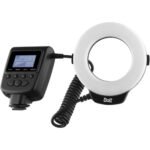









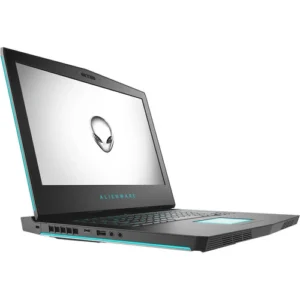
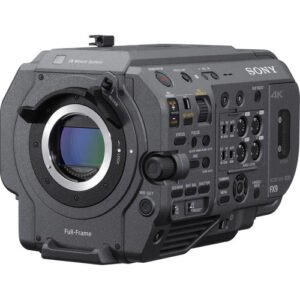
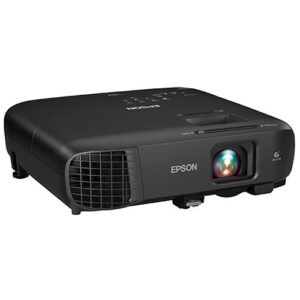
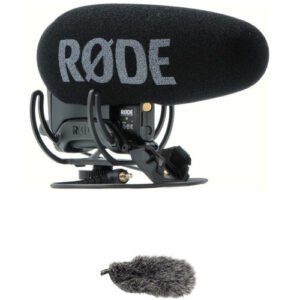
Briand –
I’ve had the C70 for a little over a year now and this is my A-Cam. Auto focus is really strong and I love that you can choose face only AF. The only knock I’d have against it is the AF tends to slow down when shooting at 120fps but that still hasn’t stopped me from shooting fast action sports like hockey with it.
If you’re looking for just a video only camera, this has got to be near the top of your list. (Yes, it can take photos but you have to re-map some buttons.). The C70 is a little heavy so if you plan on flying this on a gimbal or a glidecam, I hope you’ve been hitting the gym! I have been able to get this to fly on a ronin-S but it needs some serious counterweights. I usually use this on a Devin Graham series glidecam.
I primarily use this for sports so having the ability to shoot 4K, 120fps with audio (even though the audio is recorded onto your second card) is a huge plus for me. Speaking of audio, I do wish that canon did not use the mini XLR on this camera. Personally, I would’ve rather they use a full size XLR and ditched the white balance option buttons on the side of the camera. But hey, not every camera is perfect. Though this one nearly is.
My last knock on the C70 is unlike the R5 or R6, not every control dial on the camera controls the three aspects of light (ISO, shutter, and aperture.). On my R6, having those three dials is huge for quick adjustments. On the C70, I can only control ISO and aperture with dials and I have to push a couple buttons to change the shutter speed.
All in all, I still love this camera and use it as my primary camera!
Cooper DV –
I own a commercial production company.
This is such a work horse of a camera. You can strip it down and easily mount it on a gimbal or you can completely rig it out to be extremely useful on larger sets.
The continued updates have been amazing and the footage looks fantastic.
Couldn’t recommend this camera more.
Jeaft –
For a long time, it seemed that you had to accept certain compromises for any cinema camera less than $10k. The C70 entered the market in a weird place, with some of the guts of a C300 Mark III in a different package. It initially felt limited, but the 10-bit 4:2:2 recording is clean and robust. Using old EF lenses with the speed booster has been fantastic.
But then they filled in the blanks with updates, including raw light recording, time lapse (which should have been there), eye tracking auto focus, and the feature set now punches above its price point. The image quality and tweakability is great when you shoot log, and you don’t really have to work that hard in grading to get something to meet your intentions. Huge fan of the camera.
gipsz Ty –
I am using this camera for a while now, however it has some severe issues.
1. There is a heavy antialising and moire problem that make most of my recordings unusable!!! The effect is increased when Digital IS switched on. DIS makes every straight line jitter, no matter which lens or zoom range I am using.
2. The autofocus is really bad, probably worst than in my R7 camera, despite the Face Priority mode which would have been nice, but not working properly.
3. The battery is pretty mediocre, but costs a furtune!
4 The LCD panel is full of garbage, the hinge already came off from the body of the camera. Poor engineering.
5. It is prone to be get scratched due to the plastic of the body, especially the upper part.
I can’t beleive I paid for this camera almost the same amount as my little apartment did cost.
Ugggghhhh.
admin –
bought my second one and love them both
admin –
The small form factor is comfortable to adjust to. Coming from an R6 the RF mount was perfect.
Only downside I wish it had sdi ports but the full hdmi still works for me. Anything else is just nit picking
admin –
When I first got the C70 I worked through all the various recording formats and camera functions. I record now in CLOG2 XF-AVC as it seems to be the best bang in terms of quality and file size etc. Using the Canon LUT, I’m getting amazing video with very little grading. Battery life is awesome, ergonomics are great, and the cinema extras like zebras, peaking etc. are helpful upgrades coming from the DSLR/mirrorless world. My only wishes are for better AF (my R series cams are much better), a level meter, and the ability to see how long each scene I am shooting is vs. just having the running clock. I know these features are standard on DSLR cams and not of the “cinema” world, but if Canon is trying to drag more folks into the C world then they should consider putting these features in the C line to help folks with the transition. Bottom line however is picture quality and this camera is worth every penny.
admin –
As one of the owners of a video production company I have used a lot of cameras, both hybrid mirrorless cameras and ones such as from Blackmagic. The C70 piqued my interest a while back, as I’m primarily a Canon shooter and have a lot of RF lenses for my R5. I held off at the time as I was unsure if I wanted to grab the C70 or an R5C and wanted to feel them out a bit first. But in the last year Canon has released two major firmware updates adding internal RAW video with multiple codecs, and now enhanced autofocus and even more codecs. It feels like it should be the C70 Mark II. I really have no complaints, its barely larger than a gripped and caged R5, with tons of customizable buttons, a WAY better audio system, so I don’t always have to lug a sound bag around with me. If I could give it more than 5 stars I would.